Motorola DROID X vs. HTC EVO 4G

Introduction:
Similar to the atmosphere surrounding some highly prized boxing fight held on a weekend night, these two heavyweights are entering the ring with a two-sided crowd in attendance to see which one ends up on their feet at the conclusion of the event. Standing in with a 4.3” display with the backing of the third wireless carrier in the country and a well known modern day smartphone maker, the HTC EVO 4G has already been able to capture some mind share as it kick started the summer with a bang. On the other corner, we have the soon-to-be released Motorola DROID X which also comes in with a hefty 4.3” display – backed with Verizon's stellar network and a once again profoundly relevant Motorola. These two giants in the Android community are going to go down in history for stepping things up a notch in the mobile industry with their high flying specs and monstrous appetite for attention. In this comparison, we'll pit the HTC EVO 4G and the Motorola DROID X against one another to find out which one will leave the ring with a roar of adulation from all around.
Design:
Let's get it out of the way, both Android smartphones are the cream on the crop right on their respective carriers as they both employ mammoth sized displays that make everything else before them look quaint. Some may argue if whether or not the HTC EVO 4G pioneered the company into the next realm in terms of design, but its natural industrial design was something we expected out of them at this point. The Taiwan based company was meticulous in crafting a body for the HTC EVO 4G which was regarded as a marvel considering the larger than life screen it employed in addition to its packed internals – plus it didn't look bulky at all standing at 0.50” thick. Nevertheless, Motorola considerably took the concept to new heights as the DROID X boasts a slimmer body (0.39”), premium materials, and solid construction that give the EVO 4G a run for its money. The Motorola DROID X is clad in an all soft touch coating laying on top of its metal like foundation which substantially make it feel better constructed as a whole. Even though the HTC EVO 4G's rear utilizes a soft touch feel, it's primarily constructed out of plastic and pales in comparison to the DROID X's more sturdy workmanship. Nevertheless, the HTC EVO 4G includes a kickstand which tastefully gives it a leg up when it comes to watching videos.
These aren't your typical smartphones due to the fact that they stand out amongst most of the competition with their way above average sized displays. Both tally in at 4.3” diagonally, but you can tell from a meticulous closeup look that the DROID X is narrower and longer while the HTC EVO 4G is slightly shorter and wider. Detail is on-par to one another with the naked eye as the look of text and images is equally the same – even though the DROID X has a slightly higher resolution at 480 x 854 pixels versus the WVGA resolution on the EVO 4G. When we set both phones to their brightest levels, there was no clear winner in which one had more luminance as they were similar, however, we noticed that colors looked more natural on the DROID X. Moreover, the touchscreens on both were more than responsive to the touch and had great viewing angles which made them still viewable in direct sunlight.
We've been seeing an increasing amount of manufacturers opting to utilize touch sensitive buttons, which the HTC EVO 4G happily follows, but we find the Motorola DROID X's implementation of physical buttons to be less aggravating. It doesn't happen all the time, but some times you just have a habit of accidentally pressing one of those touch sensitive buttons on the HTC EVO 4G, but there is no obvious cause for concern with the DROID X. We also applaud both handsets for retaining standardized items as they both feature a 3.5mm headset jack, microSD card slot, removable battery, micro HDMI port, and a microUSB port for charging/data connection. Still, it's very pleasing to find a 2-level shutter key on the Motorola DROID X to launch the camera application at any instant. Finally, you'll find an 8-megapixel auto-focus camera with dual-LED flash on both phones, but the HTC EVO 4G has managed to pack on a 1.3-megapixel front-facing camera – making that one feature sorely absent on the DROID X.
HTC EVO 4G 360 Degrees View:
Similar to the atmosphere surrounding some highly prized boxing fight held on a weekend night, these two heavyweights are entering the ring with a two-sided crowd in attendance to see which one ends up on their feet at the conclusion of the event. Standing in with a 4.3” display with the backing of the third wireless carrier in the country and a well known modern day smartphone maker, the HTC EVO 4G has already been able to capture some mind share as it kick started the summer with a bang. On the other corner, we have the soon-to-be released Motorola DROID X which also comes in with a hefty 4.3” display – backed with Verizon's stellar network and a once again profoundly relevant Motorola. These two giants in the Android community are going to go down in history for stepping things up a notch in the mobile industry with their high flying specs and monstrous appetite for attention. In this comparison, we'll pit the HTC EVO 4G and the Motorola DROID X against one another to find out which one will leave the ring with a roar of adulation from all around.
Design:
Let's get it out of the way, both Android smartphones are the cream on the crop right on their respective carriers as they both employ mammoth sized displays that make everything else before them look quaint. Some may argue if whether or not the HTC EVO 4G pioneered the company into the next realm in terms of design, but its natural industrial design was something we expected out of them at this point. The Taiwan based company was meticulous in crafting a body for the HTC EVO 4G which was regarded as a marvel considering the larger than life screen it employed in addition to its packed internals – plus it didn't look bulky at all standing at 0.50” thick. Nevertheless, Motorola considerably took the concept to new heights as the DROID X boasts a slimmer body (0.39”), premium materials, and solid construction that give the EVO 4G a run for its money. The Motorola DROID X is clad in an all soft touch coating laying on top of its metal like foundation which substantially make it feel better constructed as a whole. Even though the HTC EVO 4G's rear utilizes a soft touch feel, it's primarily constructed out of plastic and pales in comparison to the DROID X's more sturdy workmanship. Nevertheless, the HTC EVO 4G includes a kickstand which tastefully gives it a leg up when it comes to watching videos.
These aren't your typical smartphones due to the fact that they stand out amongst most of the competition with their way above average sized displays. Both tally in at 4.3” diagonally, but you can tell from a meticulous closeup look that the DROID X is narrower and longer while the HTC EVO 4G is slightly shorter and wider. Detail is on-par to one another with the naked eye as the look of text and images is equally the same – even though the DROID X has a slightly higher resolution at 480 x 854 pixels versus the WVGA resolution on the EVO 4G. When we set both phones to their brightest levels, there was no clear winner in which one had more luminance as they were similar, however, we noticed that colors looked more natural on the DROID X. Moreover, the touchscreens on both were more than responsive to the touch and had great viewing angles which made them still viewable in direct sunlight.
We've been seeing an increasing amount of manufacturers opting to utilize touch sensitive buttons, which the HTC EVO 4G happily follows, but we find the Motorola DROID X's implementation of physical buttons to be less aggravating. It doesn't happen all the time, but some times you just have a habit of accidentally pressing one of those touch sensitive buttons on the HTC EVO 4G, but there is no obvious cause for concern with the DROID X. We also applaud both handsets for retaining standardized items as they both feature a 3.5mm headset jack, microSD card slot, removable battery, micro HDMI port, and a microUSB port for charging/data connection. Still, it's very pleasing to find a 2-level shutter key on the Motorola DROID X to launch the camera application at any instant. Finally, you'll find an 8-megapixel auto-focus camera with dual-LED flash on both phones, but the HTC EVO 4G has managed to pack on a 1.3-megapixel front-facing camera – making that one feature sorely absent on the DROID X.
Motorola DROID X 360 Degrees View:
HTC EVO 4G 360 Degrees View:
Software:
As it stands at this moment, both smartphones provide their own customized experiences that are running on top of Android 2.1, however, there is a noticeable performance difference between the two. These two behemoth devices don't skimp out on specs – the HTC EVO 4G is packing on a 1GHz Snapdragon processor while the Motorola DROID X is powered by a 1GHz TI OMAP 3630 CPU. Overall, the DROID X just runs faster as a whole when it comes to scrolling – it was especially more prominent when moving between the home screen or moving up or down in the apps menu. It's not to say that the HTC EVO 4G is slow, but there is a noticeable lag that's present only when you meticulously compare it – still, it doesn't deter from a decent experience. Between the two custom user interfaces, we still like how Sense is able to perfectly aggregate a host of things on-screen, but Android as a whole has that kind of option. The interface on the DROID X is less in your face and more boxy in nature, but we did like how you're able to manually re-size widgets to your liking. Depending on your taste, either handset can provide the perfect experience in tailoring to your specific lifestyle preferences.
Seeing that the core set of apps is the same on both handsets, the one feature that's strikingly prevalent and sticks out more than anything has to be the HTC EVO 4G's ability to do video chats. Either using Qik or Fring, we were able to use the front-facing camera to get in touch with people – which is obviously something that's sorely missing from the DROID X's arsenal. Going forward though, one would have to expect for this to become common among high-end smartphones; although it may certainly not be a deal breaker for some.
Having more real estate than the average smartphone, these two allow just about anyone to dish out a mean text message with their on-screen keyboards with few typos along the way. The Motorola DROID X relies on the stock Android keyboard, which requires you to press the symbol button to type in a punctuation or number, but thankfully we found it a tad bit more responsive and faster than the EVO 4G. You can literally speed type like no other without the worry of seeing the phone catch up to your presses – plus you've got the Swype keyboard as an alternative. However, we do enjoy how the HTC EVO 4G's on-screen keyboard maximizes itself to the user. Meaning that keys are integrated with other characters and symbols by simply executing a long press – this means you don't have to navigate away from the main on-screen QWERTY.
Data and Connectivity:
Some would assume that the web browsing experience would be exactly the same seeing that they're both running Android 2.1 and feature swift CPUs, but in actuality, there are a few items that the HTC EVO 4G packs on that the DROID X doesn't – Flash Lite support and 4G connectivity. Still, with Froyo down the road we expect that Flash performance on both devices will be about equal. Scrolling is pretty smooth on the EVO 4G, but the all seeing eye can spot that the DROID X is slightly smoother.
Unfortunately globe trotters won't find either handset equipped for their international travels seeing that they are CDMA devices and will only operate domestically. Luckily they both feature Wi-Fi as an alternative means for data connection when abroad, so you can rely on various VoIP clients for your voice calling needs. If you happen to fall in an area where Sprint's 4G coverage is present, the HTC EVO 4G would naturally be the perfect choice in that case scenario – even more so when you're automatically paying the $10 premium data charge each month no matter what.
Mobile HotSpot functionality is in full effect, but the HTC EVO 4G has a slight advantage as it's able to share 4G connectivity for up to 8 devices while the Motorola DROID X can lend its 3G speeds to a maximum of 5 devices via Wi-Fi.
As it stands at this moment, both smartphones provide their own customized experiences that are running on top of Android 2.1, however, there is a noticeable performance difference between the two. These two behemoth devices don't skimp out on specs – the HTC EVO 4G is packing on a 1GHz Snapdragon processor while the Motorola DROID X is powered by a 1GHz TI OMAP 3630 CPU. Overall, the DROID X just runs faster as a whole when it comes to scrolling – it was especially more prominent when moving between the home screen or moving up or down in the apps menu. It's not to say that the HTC EVO 4G is slow, but there is a noticeable lag that's present only when you meticulously compare it – still, it doesn't deter from a decent experience. Between the two custom user interfaces, we still like how Sense is able to perfectly aggregate a host of things on-screen, but Android as a whole has that kind of option. The interface on the DROID X is less in your face and more boxy in nature, but we did like how you're able to manually re-size widgets to your liking. Depending on your taste, either handset can provide the perfect experience in tailoring to your specific lifestyle preferences.
Seeing that the core set of apps is the same on both handsets, the one feature that's strikingly prevalent and sticks out more than anything has to be the HTC EVO 4G's ability to do video chats. Either using Qik or Fring, we were able to use the front-facing camera to get in touch with people – which is obviously something that's sorely missing from the DROID X's arsenal. Going forward though, one would have to expect for this to become common among high-end smartphones; although it may certainly not be a deal breaker for some.
Having more real estate than the average smartphone, these two allow just about anyone to dish out a mean text message with their on-screen keyboards with few typos along the way. The Motorola DROID X relies on the stock Android keyboard, which requires you to press the symbol button to type in a punctuation or number, but thankfully we found it a tad bit more responsive and faster than the EVO 4G. You can literally speed type like no other without the worry of seeing the phone catch up to your presses – plus you've got the Swype keyboard as an alternative. However, we do enjoy how the HTC EVO 4G's on-screen keyboard maximizes itself to the user. Meaning that keys are integrated with other characters and symbols by simply executing a long press – this means you don't have to navigate away from the main on-screen QWERTY.
Data and Connectivity:
Some would assume that the web browsing experience would be exactly the same seeing that they're both running Android 2.1 and feature swift CPUs, but in actuality, there are a few items that the HTC EVO 4G packs on that the DROID X doesn't – Flash Lite support and 4G connectivity. Still, with Froyo down the road we expect that Flash performance on both devices will be about equal. Scrolling is pretty smooth on the EVO 4G, but the all seeing eye can spot that the DROID X is slightly smoother.
Unfortunately globe trotters won't find either handset equipped for their international travels seeing that they are CDMA devices and will only operate domestically. Luckily they both feature Wi-Fi as an alternative means for data connection when abroad, so you can rely on various VoIP clients for your voice calling needs. If you happen to fall in an area where Sprint's 4G coverage is present, the HTC EVO 4G would naturally be the perfect choice in that case scenario – even more so when you're automatically paying the $10 premium data charge each month no matter what.
Mobile HotSpot functionality is in full effect, but the HTC EVO 4G has a slight advantage as it's able to share 4G connectivity for up to 8 devices while the Motorola DROID X can lend its 3G speeds to a maximum of 5 devices via Wi-Fi.
Camera and Multimedia:
Although they share a common number when it comes to their cameras, the 8-megapixel shooter in tow on the Motorola DROID X managed to edge out the HTC EVO 4G. In basically every condition we took photos, the Motorola DROID X was able to capture sharper looking images and lush colors. In good lighting conditions, you can visibly see the amount of detail and clarity in the photos captured by the DROID X whereas the HTC EVO 4G was slightly fuzzy with washed out colors – it had a slight look like they were over-exposed. In night time conditions without the flash, images on the HTC EVO 4G looked darker and extremely fuzzy. In pitch black conditions with the flash on, both handsets produced fuzzy looking photos – but the ones taken by the HTC EVO 4G came out looking more over-exposed.
The performance outcome in the video recording department was an exact replica of what's seen with taking photos – the Motorola DROID X came out on top between the two. There is a noticeable jerky movement that can be seen with videos recorded on the HTC EVO 4G – which is attributed to its 20fps capture rate. On the other hand, 720p recordings on the Motorola DROID X were consistently smoother thanks to its better 24fps capture rate. Detail is definitely there for both handsets, but we tended to see the DROID X replicate colors more naturally than the EVO 4G. All in all, the Motorola DROID X's camera is superior in almost every way to the HTC EVO 4G's.
HTC EVO 4G sample video at 1280x720 pixels
Motorola DROID X sample video at 1280x720 pixels
Honestly, the music players on both handsets hardly focus on presentation as they both are on the same level. The HTC music player in use with the EVO 4G functions and presents itself in a similar manner as the stock music player featured on the DROID X. Speaker volumes are drastically different, despite being extremely powerful on both. On one side the HTC EVO 4G has somewhat of a sharp tune that can sound like it's straining on higher notes. While the Motorola DROID X does a better job by offering more full bodied tones that aptly accentuate what's playing.
When you're packing the same exact sized displays, watching videos poses no problems thanks to the wealthy amount of real estate that your eyes can feast upon. There was no evidence of any slowdown or jerkiness when watching any of the videos we loaded onto the smartphones. As much as we love holding the phones in our hands to watch something, the HTC EVO 4G's kickstand can definitely prove to be a prized luxury as you're able to sit back and enjoy your movie without the worry of holding it in place.
Media buffs will surely find the DROID X's included 16GB microSD card to be plenty spacious in housing their content over the HTC EVO 4G's 8GB microSD card.
Although they share a common number when it comes to their cameras, the 8-megapixel shooter in tow on the Motorola DROID X managed to edge out the HTC EVO 4G. In basically every condition we took photos, the Motorola DROID X was able to capture sharper looking images and lush colors. In good lighting conditions, you can visibly see the amount of detail and clarity in the photos captured by the DROID X whereas the HTC EVO 4G was slightly fuzzy with washed out colors – it had a slight look like they were over-exposed. In night time conditions without the flash, images on the HTC EVO 4G looked darker and extremely fuzzy. In pitch black conditions with the flash on, both handsets produced fuzzy looking photos – but the ones taken by the HTC EVO 4G came out looking more over-exposed.
The performance outcome in the video recording department was an exact replica of what's seen with taking photos – the Motorola DROID X came out on top between the two. There is a noticeable jerky movement that can be seen with videos recorded on the HTC EVO 4G – which is attributed to its 20fps capture rate. On the other hand, 720p recordings on the Motorola DROID X were consistently smoother thanks to its better 24fps capture rate. Detail is definitely there for both handsets, but we tended to see the DROID X replicate colors more naturally than the EVO 4G. All in all, the Motorola DROID X's camera is superior in almost every way to the HTC EVO 4G's.
HTC EVO 4G sample video at 1280x720 pixels
Motorola DROID X sample video at 1280x720 pixels
Honestly, the music players on both handsets hardly focus on presentation as they both are on the same level. The HTC music player in use with the EVO 4G functions and presents itself in a similar manner as the stock music player featured on the DROID X. Speaker volumes are drastically different, despite being extremely powerful on both. On one side the HTC EVO 4G has somewhat of a sharp tune that can sound like it's straining on higher notes. While the Motorola DROID X does a better job by offering more full bodied tones that aptly accentuate what's playing.
When you're packing the same exact sized displays, watching videos poses no problems thanks to the wealthy amount of real estate that your eyes can feast upon. There was no evidence of any slowdown or jerkiness when watching any of the videos we loaded onto the smartphones. As much as we love holding the phones in our hands to watch something, the HTC EVO 4G's kickstand can definitely prove to be a prized luxury as you're able to sit back and enjoy your movie without the worry of holding it in place.
Media buffs will surely find the DROID X's included 16GB microSD card to be plenty spacious in housing their content over the HTC EVO 4G's 8GB microSD card.

If it weren't for the slightly stronger output by the DROID X's speakers, calling quality would've been identical. These high-powered Android sets are fantastic when it comes down to placing some good old fashion phone calls as voices were clear, distinct, and free from any background distortion to muddy the experience. However, our callers did mention to us that our voices did sound better on the Motorola DROID X – the same goes when using the speaker phones on both handsets.
While testing out in the greater Philadelphia region, both smartphones were more adept in retaining signal to the network. There was no instance when we experienced dropped calls or frequent fluctuations with bar signals on either handsets.
Setting the phones to the middle brightness setting and restricting the HTC EVO 4G from searching for a 4G network, battery life on the Motorola DROID X was definitely better. We were able to pull out a full day of normal usage before requiring a recharge – meaning push email, web browsing, text messaging, and an occasional phone call were all encountered. As for the HTC EVO 4G, we were able to crank out 15 hours of continuous normal usage before it expired. Naturally, you're going to constantly need to have a charging source on hand if you don't want to find yourself with no juice, but luckily both phones will be more than equipped in getting you by a good 8 hour work shift – that's unless you're a power user.
Conclusion:
Ultimately, timing played a key role in how things turned out as the HTC EVO 4G was the first out of the gate and set the precedence for other handsets released after. The commercials and advertising campaigns for the HTC EVO 4G perfectly sum up its talent – being a first in almost every category. It's the first Android powered handset to include a 4.3” display and 4G connectivity in the US market – plus it greatly brought the notion that these monstrous devices tacking on impressive hardware can still look good on the outside. It might not exude the premium feeling materials in use on the Motorola DROID X or durability, but its design is still compelling enough to take notice as it offers some things not found on the DROID X – like a front-facing camera and kickstand. However, the second Android smartphone in the US market to pack a 4.3” display continues Motorola's push in the Android market as it plays close to the strengths seen with the original Motorola DROID. Overall, we witnessed the DROID X excel in areas like taking photos & videos, peppy speeds when navigating, and battery life. But when the HTC EVO 4G set the notion of video calling via its front-facing camera, its omission on the DROID X is just one that can pull some people to gravitate to the EVO 4G. Pricing is the same for both handsets at $199.99 on-contract, but one will have to remember the cost savings you'll see over the course of 2 years by siding with the HTC EVO 4G. Nevertheless, you can't deny that the premium you'll be paying for service by choosing the Motorola DROID X is worth it as it's backed by Verizon's extensive and reliable network. But to tell you the truth, the knowledge of 4G speeds can be alluring and should especially be a focal point in making a decision if you're located in a market where 4G is present.
Motorola DROID X vs. HTC EVO 4G Video Comparison:
Follow us on Google News
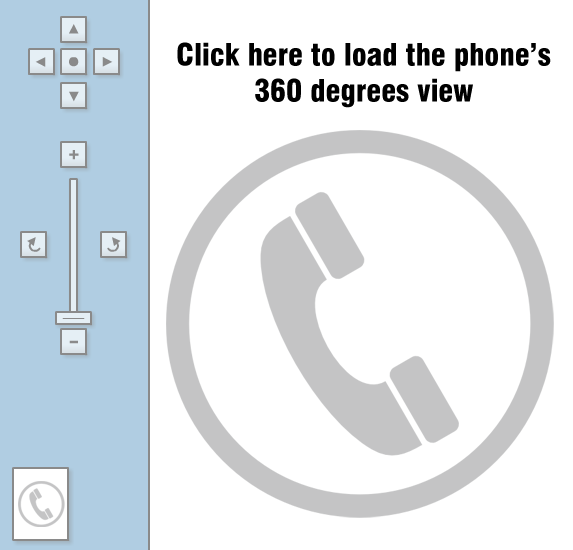

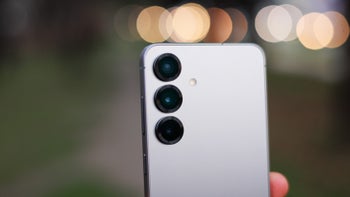

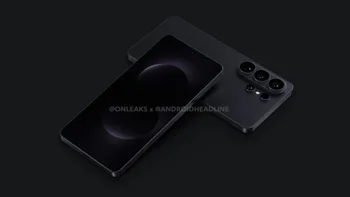
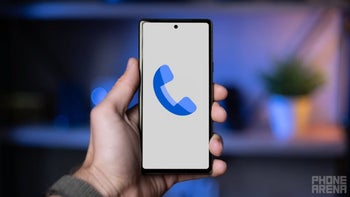

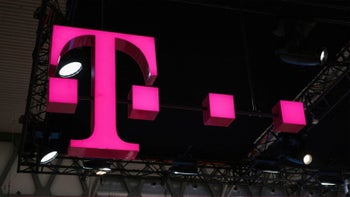

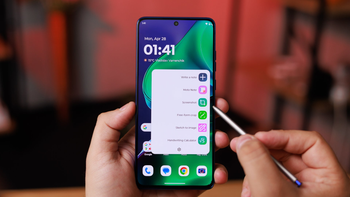


Things that are NOT allowed:
To help keep our community safe and free from spam, we apply temporary limits to newly created accounts: